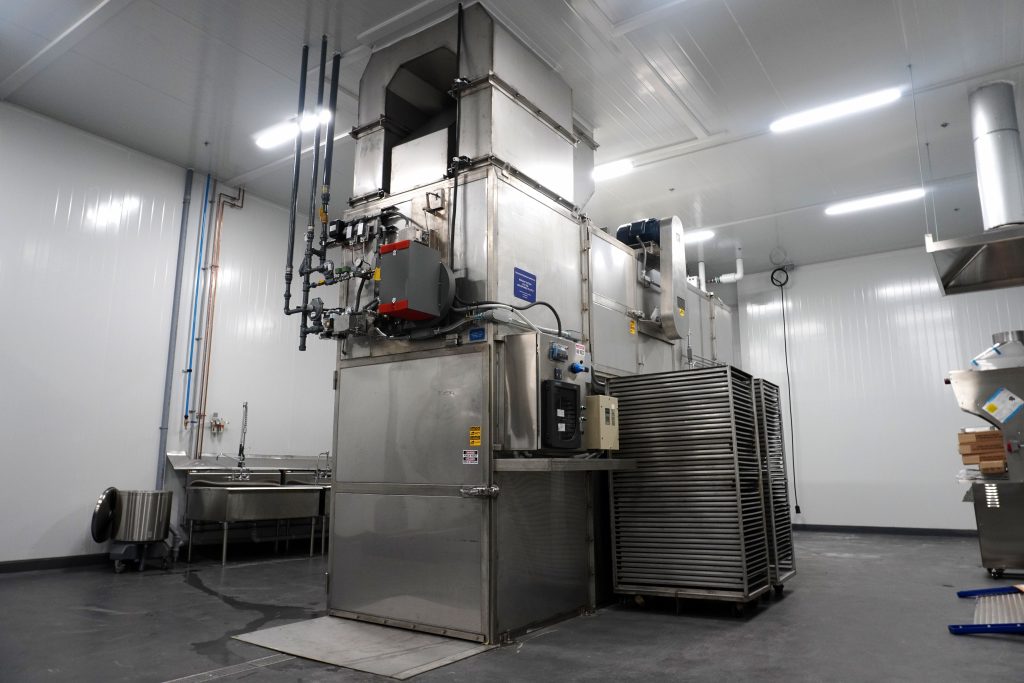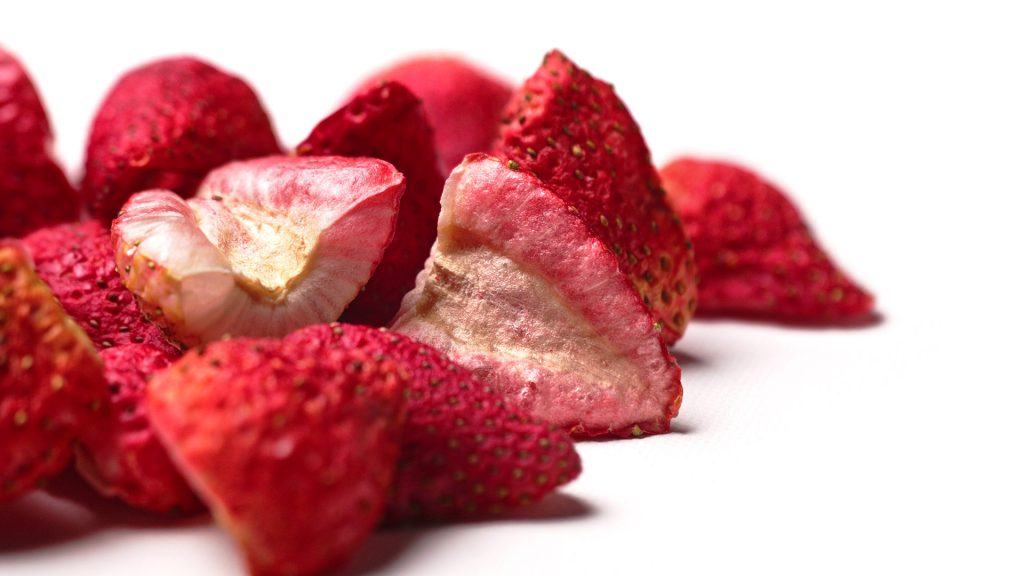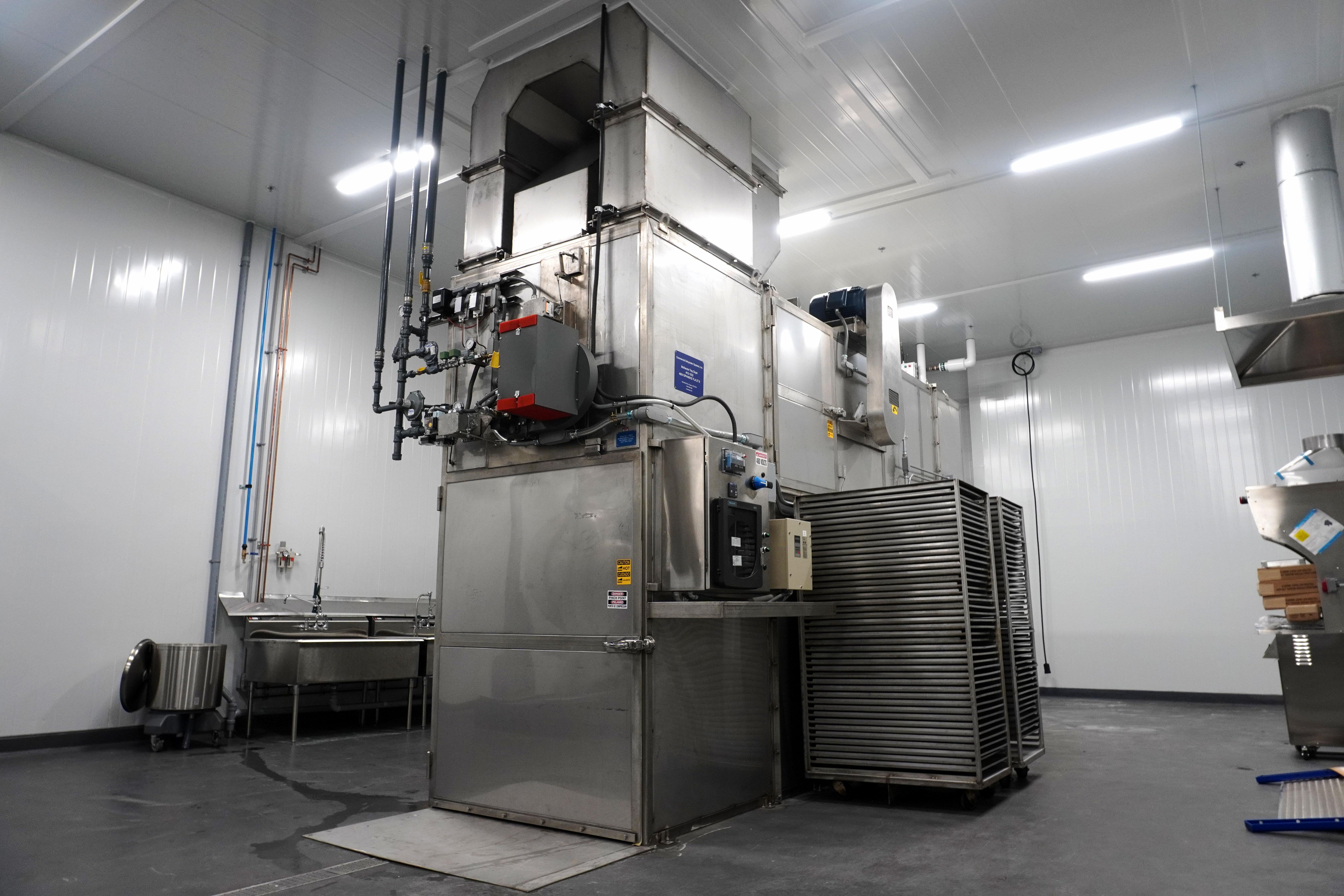How using microwave as a secondary step to freeze drying solves the heat transfer problem?
Manufacturers are constantly seeking ways to improve efficiency, reduce costs, and deliver superior-quality products. One groundbreaking approach gaining traction combines traditional freeze drying (FD) with vacuum microwave dehydration (VMD), a two-step process that preserves flavor, texture, and nutrition while slashing production times. Let’s explore how this method works, why it’s revolutionizing commercial food drying, and how real-world applications, like strawberry processing, prove its transformative potential.

Understanding the heat transfer limitations of traditional freeze drying
Lyophilization works by freezing a product and then reducing pressure so that frozen water sublimates directly from solid to vapor. The process is typically divided into three steps: freezing, primary drying (sublimation), and secondary drying (desorption of bound water). This method is highly effective at preserving sensitive compounds and maintaining product integrity, which is why it’s widely used for pharmaceuticals, probiotics, and premium food products.
However, the bottleneck for lyophilizers, whether a bench-scale unit or a large industrial freeze dryer, is the speed at which heat can be transferred into the frozen product. The process involves freezing the product, then removing moisture through sublimation under vacuum. While effective, traditional freeze drying is notoriously slow, energy-intensive, and costly. For example, drying strawberries using FD alone can take 50 hours and often results in a spongy texture, dull color, and muted flavor.
Typical freeze drying process for strawberries
- Preparation: Strawberries are harvested, washed, and sorted.
- Pre-Freezing: Halves are frozen at -20°C for 24+ hours.
- Loading: Trays are placed in a freeze dryer.
- Primary Drying (Sublimation): Pressure is lowered, and heat is applied to convert ice directly into vapor (10+ hours).
- Secondary Drying (Desorption): Remaining moisture is removed via gradual heating.
- Final Moisture: 2-3%.
- Cooling and Sealing: Product is cooled and sealed in moisture-resistant packaging.
While this process preserves food well, the slow heat transfer limits throughput and increases energy consumption.
The two-step drying process: Freeze Drying followed by Vacuum Microwave Dehydration
To address the heat transfer bottleneck, manufacturers are now integrating vacuum microwave dehydration (VMD) as a secondary drying step after freeze drying. This hybrid method leverages the strengths of both technologies:
Step 1: Freeze Drying (FD)
- Strawberries are frozen at -20°C for 24 hours.
- They undergo freeze drying for about 10 hours, removing the bulk of the moisture (down to ~80% moisture content).
- After this partial drying, the strawberries are stored in the freezer for at least 24 hours to maintain structure and stability.
Step 2: Vacuum Microwave Dehydration (VMD)
- The partially dried strawberries are loaded into a vacuum microwave dehydration unit (such as EnWave’s REV™ technology).
- Under vacuum, microwaves penetrate the food, heating water molecules directly and rapidly removing the remaining moisture.
- VMD only takes about 90 minutes to bring the moisture content down to 2-3%.
Benefits of combining freeze drying and vacuum Microwave dehydration
The combination of FD and VMD offers significant advantages over freeze drying alone:
Dramatically reduced drying time
Total drying time drops from 50 hours (FD alone) to about 11 hours (FD + VMD).
Superior product quality
The final product is crunchy, vibrant in color, and packed with intense aroma and flavor, unlike the spongy, dull, and mild results from FD alone.
Energy efficiency
Shorter drying times and more effective use of equipment can significantly lower energy consumption per unit.
Versatility
This method works for a wide range of fruits, vegetables, and other food products, making it ideal for commercial food drying and product development.
Comparative results: Freeze Drying Alone vs. Freeze Drying + Vacuum Microwave Dehydration
| Metric | Freeze Drying (FD) | FD + Vacuum Microwave Dehydration (VMD) |
|---|---|---|
| Total Drying Time | 50 hours | 11 hours |
| Texture | Spongy | Crunchy |
| Color | Dull | Vibrant |
| Aroma | Limited | Intense |
| Taste | Mild | Rich, Fresh |
| Energy Use | High | Optimized Efficiency |

Why this two-step process helps food manufacturers
For companies in food processing, food innovation, and product development, this two-step approach offers a clear path to premium, shelf-stable products. Whether you’re making dried fruit snacks, specialty ingredients, or exploring new food tech, the combination of freeze drying and vacuum microwave dehydration unlocks new possibilities for quality and efficiency.
EnWave’s REV™ technology is at the forefront of this movement, supporting partners worldwide in scaling production, reducing costs, and delivering products that stand out for their taste, texture, and appearance.
Take the next step in drying technology
If you’re looking to overcome the limitations of traditional freeze drying, integrating vacuum microwave dehydration as a secondary step could be the solution. This approach not only solves the heat transfer problem but also elevates your products to a new standard of quality.
New technologies are rewriting the rules. If you’re interested in learning more about how microwave drying equipment can fit into your production line, or want to see how these technologies compare for your specific application, contact EnWave. Our team is ready to support your journey toward faster, more efficient drying solutions.


